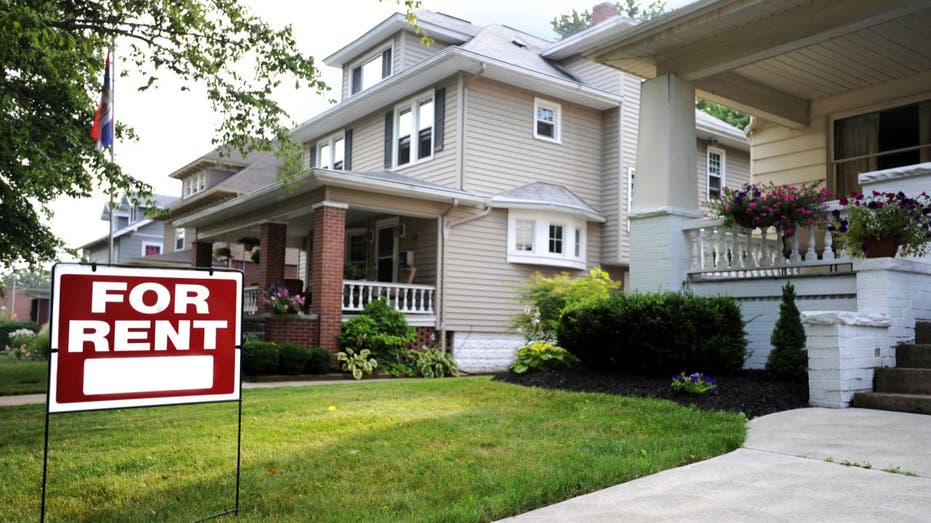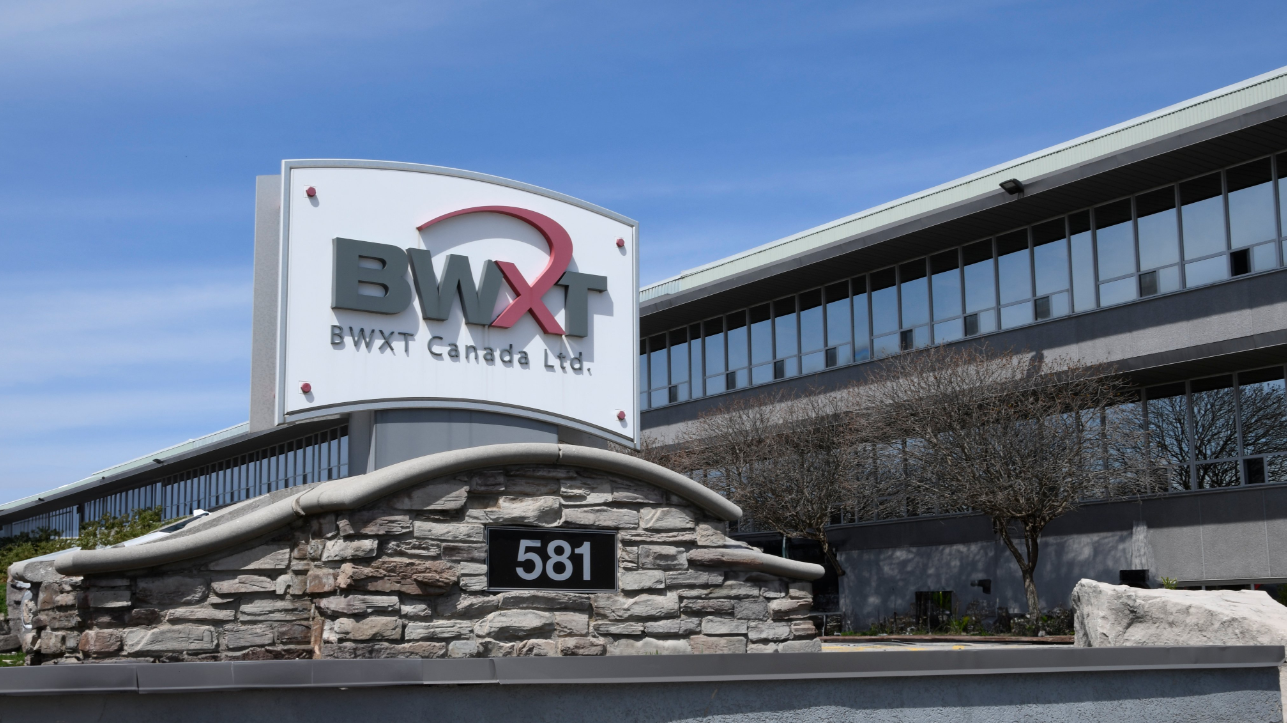Investment
Long-distance real estate investment in residential properties a hotbed in US South and Midwest – Fox Business

Josh Altman spoke to FOX Business about the luxury real estate market and the impact of the new “mansion tax” in Los Angeles.
The rising cost of living and long-term price increases of residential properties in U.S. coastal markets is pushing out-of-state real estate investors into America’s southern and Rust Belt cities.
Metropolitan areas including San Antonio, Tampa, Indianapolis, Jacksonville and Charlotte, North Carolina, are emerging as target destinations for long-distance investors.
In an interview with FOX Business, Dameion Kennedy, a real estate analyst with Lima One Capital, said “local regulations for landlords in these cities, the property taxes, labor availability, population growth and local knowledge for specific investors to find properties has pushed these locales to the top of the list.”
TODAY’S 30-YEAR MORTGAGE RATES HOLD STEADY AT 5-DAY LOW
“These cities are cheaper than West Coast markets because of long-term prices and cost of living.” he added. “However, the best investors know success depends on the individual property much more than geographic area. But there are strong trends indicating these markets have individual properties worth the investment.”
A house’s “for sale” sign shows the home is “under contract” in Washington, D.C. (Saul Loeb/AFP via Getty Images / Getty Images)
“And long-distance investing is more than building,” Kennedy added. “It could be home flipping, or it could be buying existing homes to use as rentals.”
JONBENÉT RAMSEY’S COLORADO HOME LISTED FOR $7 MILLION
Data compiled by Lima One Capital shows real estate investors are benefiting from above-average occupancy and rental rates under current market conditions, which play a key part in supercharging cash flow for portfolios.
The data also showed higher interest rates are pricing out would-be homebuyers, pushing them toward single-family rental homes.


Data compiled by Lime One Capital shows rents averaged $1,716 nationwide as of Jan. 1, up 6.4% year over year. (iStock / iStock)
At the same time, elevated interest rates have made it harder to scale portfolios for investors purchasing more properties due to difficulties making the debt-service calculations (DSCR) pencil out on new purchases.
Institutional investment in sector growing, but for how long?
In 2022, MetLife Investment Management estimated that institutions owned some 700,000 single-family rentals across the U.S., making up about 5% of the 14 million single-family rental homes.
By 2030, MetLife forecasts institutions will increase single-family rental holdings to 7.6 million homes, accounting for over 40% of the market.
MORTGAGE RATES CLIMB FOR SECOND WEEK ON STRENGTH OF ECONOMY
Kennedy said institutional investors are jumping into “hot” cities to construct multifamily properties and build-to-rent developments that include hundreds of houses for rent rather than sale.


A suburban housing development viewed from above in Texas (iStock / iStock)
“Institutional investors usually focus on the top 25 to 50 metropolitan statistical areas in the country,” he added. “And both multifamily and single-family rental properties are popular choices for institutional investors.”
According to the Lima One data, the top five U.S. states for institutional investment are
- Arizona (14.3%)
- Georgia (12.7%)
- Tennessee (10.7%)
- Nevada (10.6%)
- North Carolina (10.2%).
The top cities with the greatest share of institutional investors selling properties are
- Memphis (19.7%)
- Jacksonville, Florida (18.3%)
- Macon, Georgia (17.6%)
- Atlanta (16.8%)
- Clarksville, Tennessee (16.7%)


We could see weaker household formation and demand in 2023. Meanwhile, transaction activity will be affected by value uncertainties. (AP Photo/Eric Risberg / AP Images)
ARIZONA NAMED MOST POPULAR STATE TO MOVE TO IN 2022
“Institutional investors have jumped into the rental market with both feet in recent years, impacting both home prices and rental rates,” Kennedy said.
Marcus and Millichap CEO Hessam Nadji discusses volatility in the current housing market, apartment rent rates falling and the expected Case-Shiller 20-city index data.
GET FOX BUSINESS ON THE GO BY CLICKING HERE
“While these investment firms get a lot of publicity, they only make up about 3 to 5% of the total single-family rental market,” Kennedy added. “The overall economic uncertainty of 2022 slowed the rate of institutional investors making purchases, calling into question how much of the market they will gobble up in the coming years.”
Investment
BWXT announces $80M investment for plant in Cambridge – CityNews Kitchener


BWX Technologies (BWXT) in Cambridge is investing $80-million to expand their nuclear manufacturing plant in Cambridge.
Minister of Energy, Todd Smith, was in the city on Friday to join the company in the announcement.
The investment will create over 200 new skilled and unionized jobs. This is part of the province’s plan to expand affordable and clean nuclear energy to power the economy.
“With shovels in the ground today on new nuclear generation, including the first small modular reactor in the G7, I’m so pleased to see global nuclear manufacturers like BWXT expanding their operations in Cambridge and hiring more Ontario workers,” Smith said. “The benefits of Ontario’s nuclear industry reaches far beyond the stations at Darlington, Pickering and Bruce, and this $80 million investment shows how all communities can help meet Ontario’s growing demand for clean energy, while also securing local investments and creating even more good-paying jobs.”
The added jobs will support BWXT’s existing operations across the province as well as help the sector’s ongoing operations of existing nuclear stations at Darlington, Bruce and Pickering.
“Our expansion comes at a time when we’re supporting our customers in the successful execution of some of the largest clean nuclear energy projects in the world,” John MacQuarrie, President of Commercial Operations at BWXT, said.
“At the same time, the global nuclear industry is increasingly being called upon to mitigate the impacts of climate change and increase energy security and independence. By investing significantly in our Cambridge manufacturing facility, BWXT is further positioning our business to serve our customers to produce more safe, clean and reliable electricity in Canada and abroad.”
Investment
AI investments will help chip sector to recover: Analyst – Yahoo Finance
The semiconductor sector is undergoing a correction as interest rate cut expectations dwindle, prompting concerns about the impact on these high-growth, technology-driven stocks. Wedbush Enterprise Hardware Analyst Matt Bryson joins Yahoo Finance to discuss the dynamics shaping the chip industry.
Bryson acknowledges that the rise of generative AI has been a significant driving force behind the recent success of chip stocks. While he believes that AI is shifting “the way technology works,” he notes it will take time. Due to this, Bryson highlights that “significant investment” will continue to occur in the chip market, fueled by the growth of generative AI applications.
However, Bryson cautions that as interest rates remain elevated, it could “weigh on consumer spending.” Nevertheless, he expresses confidence that the AI revolution “changing the landscape for tech” will likely insulate the sector from the effect of high interest rates, as investors are unwilling to miss out on the “next technology” breakthrough.
For more expert insight and the latest market action, click here to watch this full episode of Yahoo Finance.
This post was written by Angel Smith
Video Transcript
BRAD SMITH: As rate cut bets shift, so have moves in one sector, in particular. Shares of AMD and Intel, both down over 15% in the last 30 days. The Philadelphia Semiconductor Index, also known as Sox, dropping over 10% from recent highs, despite a higher rate environment.
Our next guest is still bullish on the sector. Matt Bryson, Wedbush Enterprise Hardware analyst, joins us now. Matt, thanks so much for taking the time here. Walk us through your thesis here, especially, given some of the pullback that we’ve seen recently.
MATT BRYSON: So I think what we’ve seen over the last year or so is that the growth of generative AI has fueled the chip stocks. And the expectation that AI is going to shift everything in the way that technology works.
And I think that at the end of the day, that that thesis will prove out. I think the question is really timing. But the investments that we’ve seen that have lifted NVIDIA, that have lifted AMD, that have lifted the chip stock and sector, in general, the large cloud service providers, building out data centers. I don’t think anything has changed there in the near term.
So when I speak to OEMs, who are making AI servers, when I speak to cloud service providers, there is still significant investment going on in that space. That investment is slated to continue certainly into 2025. And I think, as long as there is this substantial investment, that we will see chip names report strong numbers and guide for strong growth.
SEANA SMITH: Matt, when it comes to the fact that we are in this macroeconomic environment right now, likelihood that rates will be higher for longer here, at least, when you take a look at the expectations, especially following some of the commentary that we got from Fed officials this week, what does that signal more broadly for the AI trade, meaning, is there a reason to be a bit more cautious in this higher for longer rate environment, at least, in the near term?
MATT BRYSON: Yeah. I think certainly from a market perspective, high interest rates weight on the market. Eventually, they weigh on consumer spending. Certainly, for a lot of the chip names, they’re high multiple stocks.
When you think about where there can be more of a reaction or a negative reaction to high interest rates, certainly, it has some impact on those names. But in terms of, again, AI changing the fundamental landscape for tech, I don’t think that high interest rates or low interest rates will change that.
So when you think about Microsoft, Amazon, all of those large data center operators looking at AI, potentially, changing the landscape forever and wanting to make a bet on AI to make sure that they don’t miss that change, I don’t think whether interest rates are low or high are going to really affect their investment.
I think they’re going to go ahead and invest because no one wants to be the guy that missed the next technology wave.
Investment
If pension funds can't see the case for investing in Canada, why should you? – The Globe and Mail


It’s time to ask a rude question: Is Canada still worth investing in?
Before you rush to deliver an appropriately patriotic response, think about the issue for a moment.
A good place to begin is with the federal government’s announcement this week that it is forming a task force under former Bank of Canada governor Stephen Poloz. The task force’s job will be to find ways to encourage Canadian pension funds to invest more of their assets in Canada.
Wooing pension funds has become a high-priority matter for Ottawa because, at the moment, these big institutional investors don’t invest all that much in Canada. The Canada Pension Plan Investment Board, for instance, had a mere 14 per cent of its massive $570-billion portfolio in Canadian assets at the end of its last fiscal year.
Other major Canadian pension plans have similar allocations, especially if you look beyond their holdings of government bonds and consider only their investments in stocks, infrastructure and real assets. When it comes to such risky assets, these big, sophisticated players often see more potential for good returns outside of Canada than at home.
This leads to a simple question: If the CPPIB and other sophisticated investors aren’t overwhelmed by Canada’s investment appeal, why should you and I be?
It’s not as if Canadian stocks have a record of outstanding success. Over the past decade, they have lagged far behind the juicy returns of the U.S.-based S&P 500.
To be fair, other countries have also fallen short of Wall Street’s glorious run. Still, Canadian stocks have only a middling record over the past 10 years even when measured against other non-U.S. peers. They have trailed French and Japanese stocks and achieved much the same results as their Australian counterparts. There is no obvious Canadian edge.
There are also no obvious reasons to think this middle-of-the-pack record will suddenly improve.
A generation of mismanagement by both major Canadian political parties has spawned a housing crisis and kneecapped productivity growth. It has driven household debt burdens to scary levels.
Policy makers appear unwilling to take bold action on many long-standing problems. Interprovincial trade barriers remain scandalously high, supply-managed agriculture continues to coddle inefficient small producers, and tax policy still pushes people to invest in homes rather than in productive enterprises.
From an investor’s perspective, the situation is not that appetizing. A handful of big banks, a cluster of energy producers and a pair of railways dominate Canada’s stock market. They are solid businesses, yes, but they are also mature industries, with less than thrilling growth prospects.
What is largely missing from the Canadian stock scene are big companies with the potential to expand and innovate around the globe. Shopify Inc. SHOP-T and Brookfield Corp. BN-T qualify. After that, the pickings get scarce, especially in areas such as health care, technology and retailing.
So why hold Canadian stocks at all? Four rationales come to mind:
- Canadian stocks have lower political risk than U.S. stocks, especially in the run-up to this year’s U.S. presidential election. They also are far away from the front lines of any potential European or Asian conflict.
- They are cheaper than U.S. stocks on many metrics, including price-to-earnings ratios, price-to-book ratios and dividend yields. Scored in terms of these standard market metrics, they are valued more or less in line with European and Japanese stocks, according to Citigroup calculations.
- Canadian dividends carry some tax advantages and holding reliable Canadian dividend payers means you don’t have to worry about exchange-rate fluctuations.
- Despite what you may think, Canada’s fiscal situation actually looks relatively benign. Many countries have seen an explosion of debt since the pandemic hit, but our projected deficits are nowhere near as worrisome as those in the United States, China, Italy or Britain, according to International Monetary Fund figures.
How compelling you find these rationales will depend upon your personal circumstances. Based strictly on the numbers, Canadian stocks look like ho-hum investments – they’re reasonable enough places to put your money, but they fail to stand out compared with what is available globally.
Canadians, though, have always displayed a striking fondness for homebrew. Canadian stocks make up only a smidgen of the global market – about 3 per cent, to be precise – but Canadians typically pour more than half of their total stock market investments into Canadian stocks, according to the International Monetary Fund. This home market bias is hard to justify on any rational basis.
What is more reasonable? Vanguard Canada crunched the historical data in a report last year and concluded that Canadian investors could achieve the best balance between risk and reward by devoting only about 30 per cent of their equity holdings to Canadian stocks.
This seems to be more or less in line with what many Canadian pension funds currently do. They have about half their portfolio in equities, so devoting 30 per cent of that half to domestic stocks works out to holding about 15 per cent of their total portfolio in Canadian equities.
That modest allocation to Canadian stocks is a useful model for Canadian investors of all sizes. And if Ottawa doesn’t like it? Perhaps it could do more to make Canada an attractive investment destination.
-
Media17 hours ago
DJT Stock Rises. Trump Media CEO Alleges Potential Market Manipulation. – Barron's
-
Media19 hours ago
Trump Media alerts Nasdaq to potential market manipulation from 'naked' short selling of DJT stock – CNBC
-
Investment17 hours ago
Private equity gears up for potential National Football League investments – Financial Times
-



 Sports22 hours ago
Sports22 hours ago2024 Stanley Cup Playoffs 1st-round schedule – NHL.com
-
News15 hours ago
Canada Child Benefit payment on Friday | CTV News – CTV News Toronto
-
Real eState9 hours ago
Botched home sale costs Winnipeg man his right to sell real estate in Manitoba – CBC.ca
-
Business17 hours ago
Gas prices see 'largest single-day jump since early 2022': En-Pro International – Yahoo Canada Finance
-
Art21 hours ago
Enter the uncanny valley: New exhibition mixes AI and art photography – Euronews





